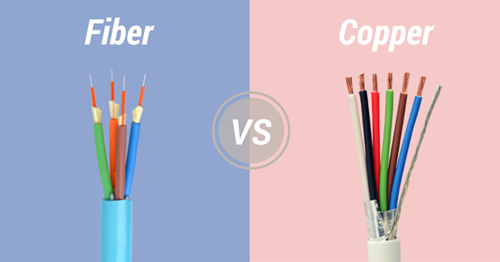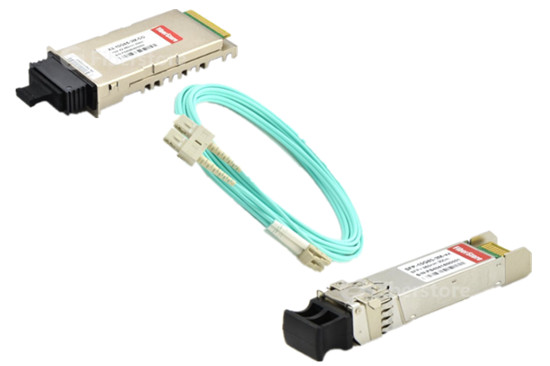Fiber Jumper Selection Guide for Optical Transceivers
Fiber optical transceivers and fiber jumpers are two most fundamental parts in fiber network connectivity. Fiber optic transceivers vary from transmission media, interface, transmission distance, data rate, and brand. It’s not difficult to identify various transceivers in the market. In order to achieve seamless connection between transceivers and fiber jumpers, many factors need to be considered.
According to transmission media of fiber and copper, transceivers can be divided into two kinds, copper based transceivers and fiber optic based transceivers. MSA has defined several copper based transceiver like: 10GBASE-T SFP, 100BASE-T SFP and 1000BASE-T SFP. Copper transceivers are available in GBIC, SFP and SFP+ form factors, which usually has a RJ45 interface. So Cat5/6/7 cables are typically used to connect with the transceivers. Maybe Cat8 will be researched and developed to support higher data rate up to 40G sooner or later.

When it comes to optical transceivers, things are more complex. Because optical transceivers require different fiber patch cords which have more types. Fiber patch cables cover single-mode and multimode. Single-mode patch cable can be classified into OS1 and OS2. While multimode cables can be divided into OM1, OM2, OM3, OM4 cable. Different cables are used in different applications. Single-mode cable can support long distance transmission and multimode cable for short distance link. If the transmission distance is shorter than 500 meters, multimode patch cable is suggested. For long distance transmission, single-mode transmission is suggested. You should also consider that the transmission data rate can also affect the transmission distance. Let’s look at the following point.

MSA has defined a variety of transceivers that can support different transmission distances and data rates. When you buy a fiber optic transceiver, you will find the data rate, wavelength, distance, etc. on its labeling.
As mentioned before, single-mode patch cable is better suited for long distance transmission while multimode patch cable for short distance transmission. Actually single-mode patch cords can be used for different data rates in both long and short distances. But single-mode fiber optic cable will cost more. To achieve reliable performance in short distances with cost effective solutions, you should know the performance of multimode fiber optic cables.
The choice of fiber jumpers for transceivers also depends on the interfaces through which patch cords is connected to the transceiver. In addition, transceiver usually used one port for transmitting and one port for receiving. Generally, fiber optic transceivers usually employs duplex SC or LC interfaces. However, for BiDi transceivers only one port is used for both transmitting and receiving. Thus, simplex patch cord is used with BiDi transceiver.
Some 40G/100GBASE QSFP+ transceivers used MTP/MPO interfaces, which should be connected to the network with multi-fiber patch cords attached with MTP/MPO connectors. If these ports are used for 40G to 10G or 100G to 10G connection, then fanout patch cable should be used. For example, a MTP to 8 LC fanout cable can splitter 40G data rate to four 10G data rate.
Only when choosing the right fiber jumpers for the optical transceivers can you ensure a good performance of your networks. Next time when you choose fiber jumpers for your fiber optic transceivers, you can consider all these factors comprehensively.